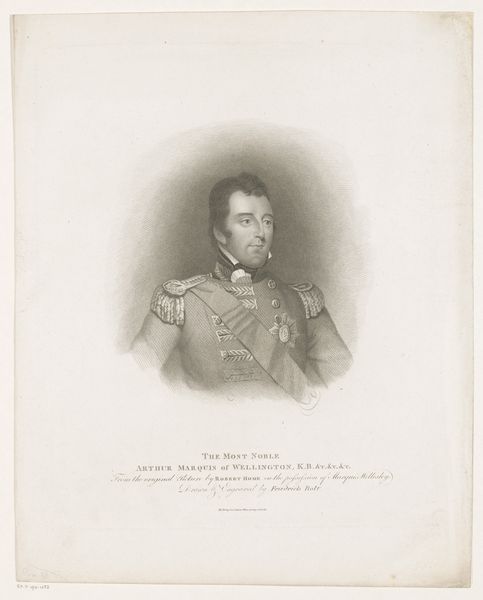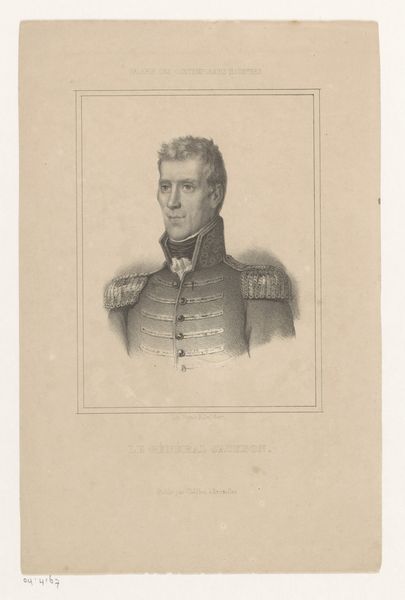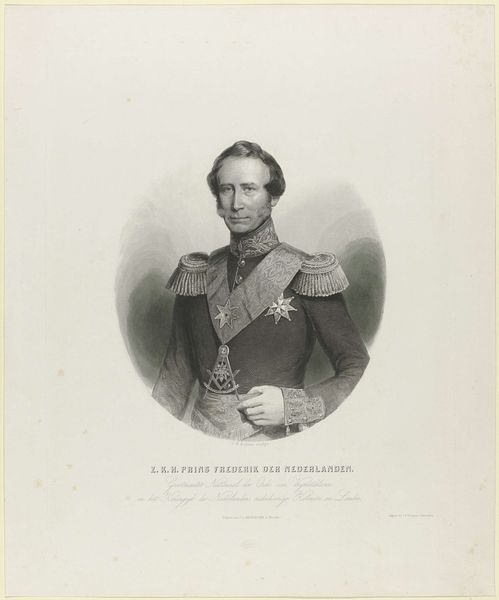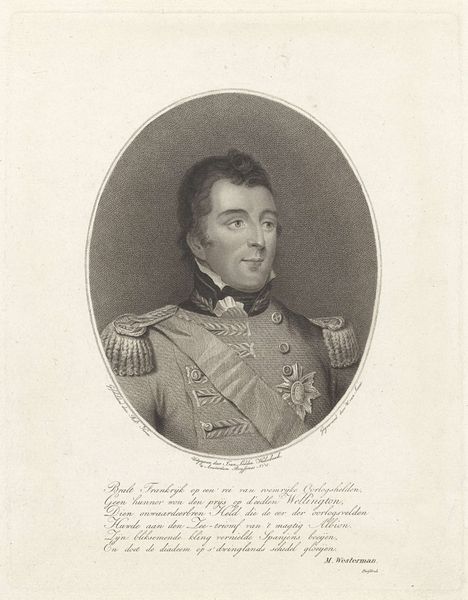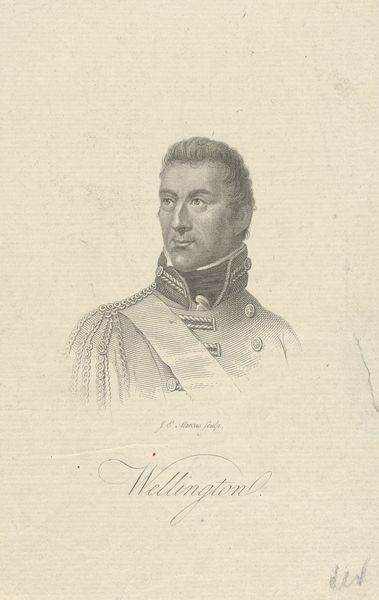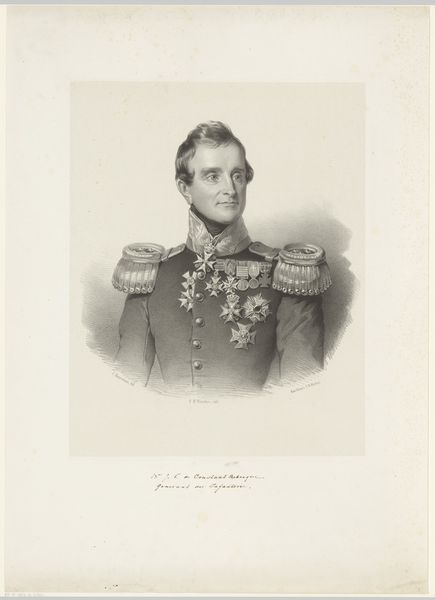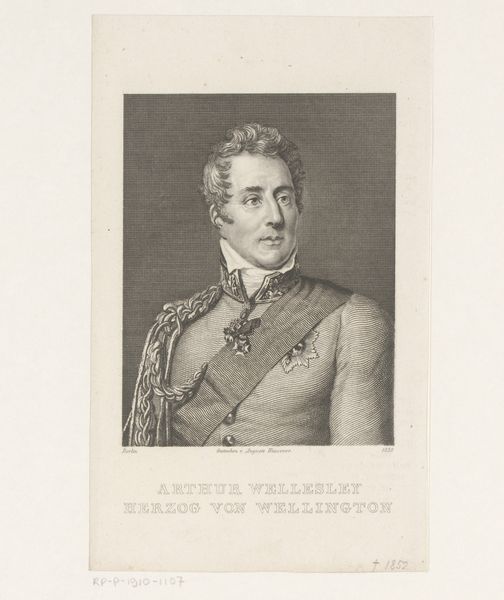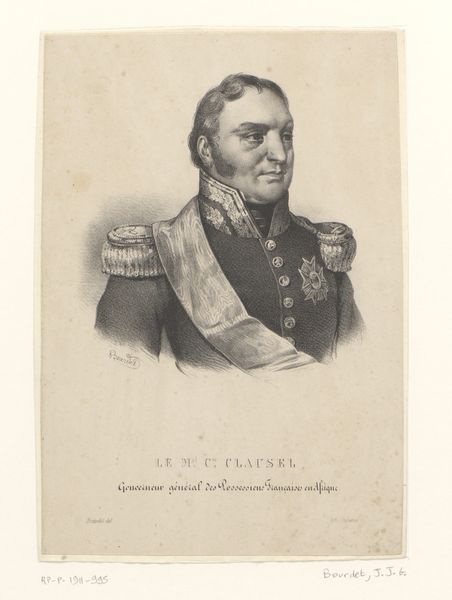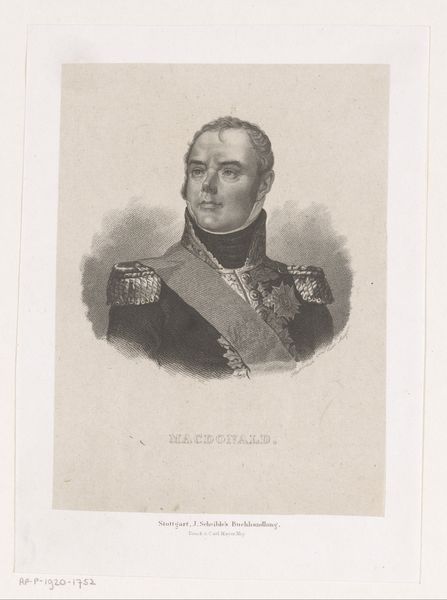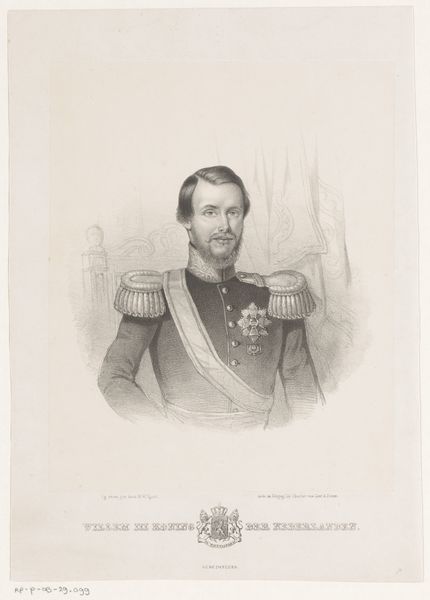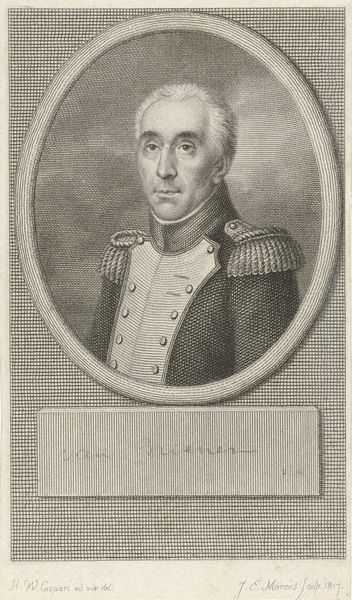
#
pencil drawn
#
light pencil work
#
photo restoration
#
pencil sketch
#
old engraving style
#
historical photography
#
pencil drawing
#
old-timey
#
yellow element
#
pencil work
Dimensions: height 295 mm, width 238 mm
Copyright: Rijks Museum: Open Domain
Curator: This is Willem van Senus's portrait of Arthur Wellesley, Marquis of Wellington. It was created sometime between 1808 and 1851 and resides here at the Rijksmuseum. Editor: The delicate shading gives it such an ethereal feel. It almost glows from within. There is such careful precision and soft execution. It’s masterfully rendered. Curator: Indeed. Van Senus has clearly mastered the pencil medium. We can observe the production involved in the initial marks which have developed into this light pencil work, typical of early 19th-century portraiture of ranking figures. Editor: Note how the artist employs an almost minimalist approach in rendering the subject's face. It seems he is seeking a kind of classical ideal of masculinity, using very subtle, structurally clean lines to define Wellington's jawline and the set of his eyes. Curator: This ties directly into the context. Wellington, a celebrated military figure and later Prime Minister, embodied British imperial power. The artistic choices highlight a cultivated image. This speaks volumes about the socio-political value placed on representation and leadership in that period. There is no aggressive posturing here. It is a sketch of gentle power. Editor: The composition further contributes to that feeling. He has left quite a bit of negative space around the Marquis that softens and isolates him in such a way that there is an undeniable introspective feel, despite the stern countenance. Curator: Absolutely. Furthermore, the medium of a light pencil drawing itself is relevant, making this portrait more intimate. There is no bombast. We can examine this intimacy, and further explore Van Senus’ material decisions. His tools. We can interpret this further to understand social functions of representing figures of power. Editor: It certainly prompts consideration of the interplay between the individual and the myth of the historical leader, mediated through this visual language. Well, the balance of clarity and softness, formality and intimation makes this artwork linger in one's mind. Curator: I concur. Reflecting on this work reveals much about 19th-century European values and artistic skill.
Comments
No comments
Be the first to comment and join the conversation on the ultimate creative platform.
